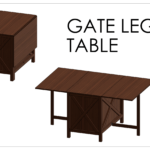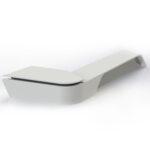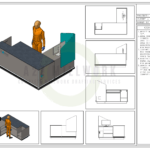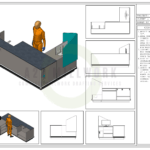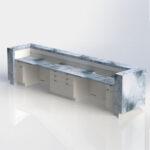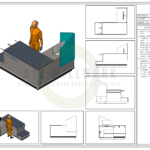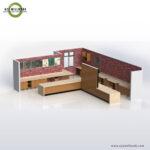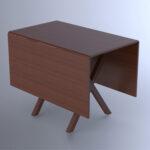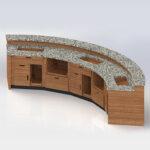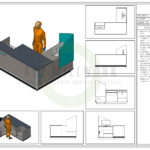In today’s competitive market, branding is no longer reserved for consumer goods and tech companies alone. Even specialized sectors like millwork manufacturing can benefit immensely from a strong brand identity. But what does it take for a millwork manufacturer to evolve from a company to a brand? This article delves into the nuances of branding for millwork manufacturers, offering practical advice, examples, and strategies to navigate this transformation.
Understanding the Millwork Industry
Millwork manufacturing involves producing detailed, high-quality wood products for interiors, including cabinetry, moldings, doors, and custom furniture. The industry is characterized by a high level of craftsmanship and attention to detail. However, despite the intrinsic value of their products, many millwork manufacturers struggle to stand out in a crowded market. This is where branding comes into play.
What is the Difference Between a Company and a Brand?
Company
A company is an operational entity focused on producing goods or services. It deals with the day-to-day activities of manufacturing, logistics, sales, and customer service. Success is often measured in financial terms and operational efficiency.
Brand
A brand is the emotional and psychological relationship a company has with its customers. It goes beyond the products and services to include the company’s identity, values, mission, and reputation. A brand is built through consistent messaging, quality, and customer experiences.
Key Differences:
- Identity vs. Perception: A company is what it is; a brand is how the company is perceived.
- Transactional vs. Emotional: Companies focus on transactions; brands build emotional connections.
- Operational vs. Experiential: Companies are about operations; brands are about the customer experience.
How Can a Millwork Manufacturer Company Become a Brand?
1. Identify Unique Selling Propositions (USP)
To become a brand, a millwork manufacturer must first identify what sets it apart from competitors. Is it the exceptional quality of the craftsmanship, the sustainability of the materials, or the bespoke nature of the designs? Clear USPs help create a distinct identity that resonates with customers.
2. Develop a Strong Brand Identity
Creating a memorable brand identity involves a cohesive visual and verbal representation:
- Logo and Tagline: Design a professional logo and a catchy tagline that encapsulates your brand essence.
- Brand Colors and Fonts: Use consistent colors and fonts that reflect your brand’s personality.
- Website and Social Media Presence: Develop an engaging website and maintain active social media profiles to showcase your work and values.
3. Craft a Compelling Brand Story
A compelling brand story is critical for emotional engagement. It should narrate the company’s history, mission, and values, highlighting what makes its products unique. This narrative helps build an emotional bond with customers, making the brand memorable.
4. Maintain Consistent Brand Messaging
Consistency is crucial in branding. Ensure that your messaging across all platforms, including your website, social media, and marketing materials, aligns with your brand’s values and voice. This consistency reinforces the brand image and helps in building trust.
5. Leverage Quality and Customer Satisfaction
High-quality products and exceptional customer service are the backbones of a strong brand. Positive customer experiences lead to word-of-mouth recommendations and repeat business, both essential for brand building.
6. Implement Effective Marketing Strategies
Effective marketing increases brand awareness:
- Content Marketing: Create valuable content such as blog posts, case studies, and project showcases.
- Social Media Marketing: Use visual platforms like Instagram and Pinterest to display your work.
- Partnerships and Collaborations: Collaborate with interior designers, architects, and contractors.
- Customer Testimonials and Reviews: Leverage positive reviews to build credibility.
- Industry Awards and Certifications: Seek industry recognition to enhance credibility.
7. Engage in Public Relations
Engage in public relations to increase your brand’s visibility. This includes participating in industry events, networking with influencers, and getting featured in industry publications.
Case Studies of Successful Branding in Millwork or Similar Industries in the USA
1. Andersen Windows
Overview: Andersen Windows, a prominent name in the window and door manufacturing industry, has successfully transitioned from a company to a trusted brand. Founded in 1903, Andersen has leveraged over a century of expertise to build its brand.
Strategies:
- Quality and Innovation: Andersen emphasizes quality and continuous innovation in its product lines. They have introduced energy-efficient windows, catering to the growing demand for sustainable products.
- Strong Brand Identity: The company’s logo, tagline (“Love The Life You See”), and consistent branding across all platforms help in maintaining a strong brand presence.
- Customer Engagement: Andersen actively engages with its customers through social media, providing design inspiration and product information.
Quantitative Data:
- Market Share: Andersen holds a significant share of the U.S. window and door market, demonstrating their strong brand presence.
- Revenue: The company reported revenues exceeding $3 billion in recent years, showcasing the financial success of their brand strategy.
2. Kohler Co.
Overview: Kohler Co. is renowned for its kitchen and bath products. Since its founding in 1873, Kohler has built a brand synonymous with quality, design excellence, and innovation.
Strategies:
- Design Excellence: Kohler invests heavily in design and innovation, consistently bringing new, stylish, and functional products to the market.
- Brand Consistency: Kohler’s consistent use of its logo, tagline (“The Bold Look of Kohler”), and brand colors across all marketing materials ensures a strong and recognizable brand identity.
- Customer Experience: Kohler emphasizes providing an exceptional customer experience, from product quality to after-sales service.
Quantitative Data:
- Revenue: Kohler’s annual revenues are estimated to be around $7 billion, indicating strong market performance and brand equity.
- Market Position: Kohler is a leading player in the U.S. kitchen and bath market, with significant brand recognition and customer loyalty.
3. Herman Miller
Overview: Herman Miller, a furniture manufacturer, is known for its ergonomic designs and high-quality office furniture. The company has effectively branded itself as a leader in innovative and functional design.
Strategies:
- Innovative Products: Herman Miller’s focus on ergonomics and innovative design, such as the Aeron chair, has set them apart in the furniture industry.
- Brand Story: The company’s commitment to quality and sustainability is central to its brand story, resonating with a broad audience.
- Marketing and PR: Herman Miller leverages modern marketing techniques and public relations to maintain visibility and brand strength.
Quantitative Data:
- Revenue: Herman Miller’s revenues are consistently around $2 billion annually, reflecting strong market presence and brand loyalty.
- Market Impact: The Aeron chair alone has become an icon of modern office furniture, exemplifying Herman Miller’s brand success.
Challenges in Branding for Millwork Manufacturers
1. High Competition
The millwork industry is highly competitive. To stand out, companies must continually innovate and differentiate themselves through unique selling propositions and quality.
2. Niche Market
Millwork products cater to a niche market, which can limit the customer base. Expanding brand awareness requires targeted marketing efforts to reach potential customers beyond the immediate niche.
3. Long Sales Cycles
Millwork projects often involve lengthy sales cycles, with multiple stakeholders and decision-makers. Maintaining consistent branding and customer engagement throughout this process can be challenging.
4. Balancing Custom Craftsmanship with Scalability
Millwork manufacturers pride themselves on custom craftsmanship. Scaling this while maintaining quality can be difficult, but it is essential for brand growth.
5. Technology and Innovation Costs
Investing in the latest technology and innovation is crucial for staying competitive. However, these investments can be costly, requiring careful resource allocation.
Conclusion
In conclusion, a millwork manufacturer company can indeed become a brand by identifying unique selling propositions, developing a strong brand identity, crafting a compelling brand story, maintaining consistent brand messaging, leveraging quality and customer satisfaction, and implementing effective marketing strategies. The transition from a company to a brand involves creating an emotional connection with customers and building a reputation that goes beyond the products.
A2Z Millwork Design exemplifies how a millwork manufacturer can become a recognized brand. By focusing on CAD outsourcing, custom woodwork shop drawings, and Microvellum shop drawings, A2Z Millwork Design has built a strong brand identity in the industry. Embracing branding can lead to increased market presence, customer loyalty, and long-term success for millwork manufacturers.


